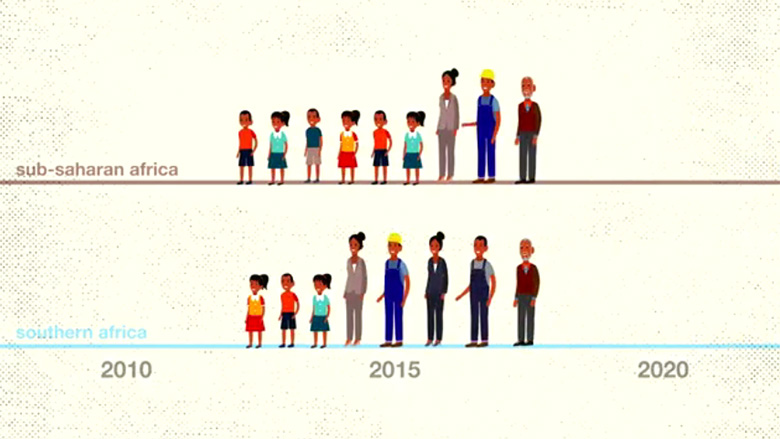GABORONE, May 5, 2017—The World Bank’s Forever Young
The report’s findings were presented to government officials, academia, and other stakeholders in Gaborone in March.
“Botswana will need to rethink its economic strategy to take advantage of the demographic opportunity offered by an increasing workforce,” said Elene Imnadze, World Bank Botswana Country Representative at the Forever Young Report presentation. “The country does not currently rely on labor as the main factor of production. Thus, the potential gains from the demographic opportunity can be severely constrained, as the link between GDP growth and employment is weak.”
A shift of economic structure towards
Luckily, demography per se will not add much to the fiscal burden of social sectors, such as education, health, and social protection, and it will ease in the case of education. Assuming coverage and spending per pupil stay constant at current levels, fiscal spending on education would decrease by more than 3 percentage points of GDP between now and 2050, as the number of school-age children declines.
“This can provide the government with the necessary fiscal space to increase investment in the productivity of the workforce, focusing on the quality of education and skills demanded by the labor market,” said Jamele Rigolini, Lead
While demographic transition in Botswana is inevitable, a positive dividend from it is not. Botswana will have to act now and implement key policy reforms to allow current and future generations to harness it.

